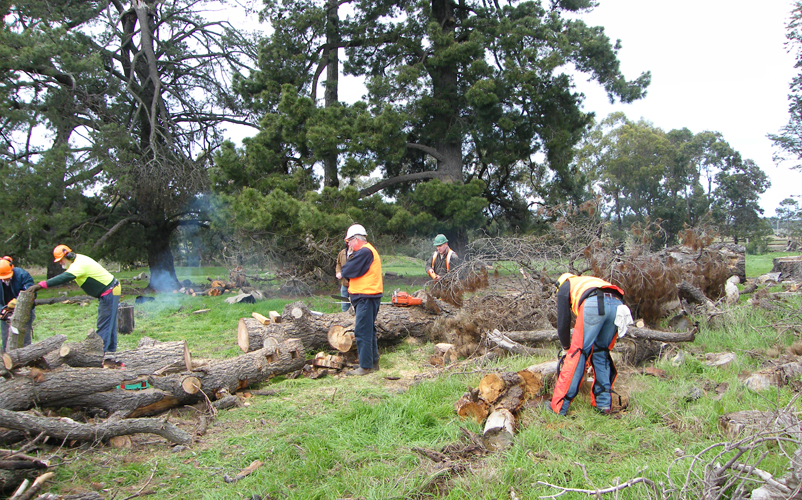Much has been written of the importance of emergency management organisations involving communities in risk-reduction measures before an emergency and working with them after a disaster event to recover. Having the local community involved generally leads to favourable post-disaster outcomes.
However, there is little evidence of long-term successful collaborations that are not underpinned by government funding and do not take a top-down approach. Without established networks in place, there are significant difficulties for emergency management organisations to enter vulnerable communities and immediately gain trust, knowledge and motivate collective action.
A study undertaken by Monash University has found that not-for-profit organisations may be the key to entry into communities as these organisations are generally trusted and are long-term ‘gatekeepers’ of communities. Further, this research identified evidence of significant and constructive resilience-building actions undertaken by the not-for-profit sector.
Study methodology
The research was undertaken within the Monash University Disaster Resilience Initiative, following Monash’s ethics and research codes of practice protocols. The primary research question was ‘What is the potential role of nonprofit organisations in building community resilience to disasters?’.
The approach was an applied research project using resilience theory in the disaster setting, the Sendai Framework for Disaster Risk Reduction 2015–2030 and social capital theory to build the research scaffolding. The scaffolding informed the analysis and results to identify ‘what matters most to building community resilience to disasters’.

The Lions Club established the Need for Feed initiative in 2006 to coordinate fodder for livestock in communities in Victoria. Image: Fiona Roberts
Case studies were used to illustrate organisation actions, strengths, barriers and enablers in the disaster context. Qualitative research methods identified key themes. Lions Clubs, Rotary Clubs and Neighbourhood Houses Victoria were the subjects of the case studies. The actions of these organisations were investigated before, during and after the 2009 Black Saturday bushfires, the 2011 Victorian floods and the Hazelwood mine fire of 2014.
Findings summary
Not-for-profit organisations do not operate for member profit, but function to achieve the organisation’s purpose. Organisations such as the Lions Club, Rotary Club and Neighbourhood Houses Victoria have long histories of local community involvement, with missions focused on service to their community by volunteer members. While not established to respond to disasters, they have been heavily involved in communities recovering from disaster events and their actions, detailed in the cases, demonstrate potential to help communities. However, the literature identified in this study did not indicate much involvement by these groups in emergency management planning nor resilience-building exercises.
The study results illustrated that not-for-profit organisations contribute significantly to local communities during and after disasters. Actions include providing quick access to local assets (machinery ownership or skills, community kitchens), providing physical assistance (water, toilets, food, clean-up or shelter) through to contributing long-term recovery actions lasting years (establishing and funding Mens’ Sheds, tool libraries or community activities).
The strengths of these organisations were found to enhance community resilience in the disaster setting. Rotary Clubs, Lions Clubs and Neighbourhood Houses are long-term local contributors to community development. These organisations are embedded in their communities, they have extensive community networks and connections and people know and trust them. They often support the most vulnerable people and they are empowered to action, independent of government, to help their communities. With an underpinning drive to help, they have the potential to be sustainable contributors to communities before, during and after emergency situations.
The emergency management perspective was investigated through a review of policy documents. These policies encouraged community engagement and recognised its importance in building community resilience. Emergency management stakeholders who were interviewed recognised that the not-for-profit sector had significant strengths like community connections, local knowledge and could motivate volunteers to assist and often provided creative solutions to issues.
The study demonstrated the usefulness of not-for-profit organisations before, during and after emergencies.

The Rotary Club in Victoria organises training for members and volunteers in chainsaw safety. Image: P. Clancy
While incorporating these organisations into emergency management planning and response has its challenges, emergency management policy that includes not-for-profit organisations in sharing some responsibilities is valid and could potentially strengthen community resilience.
The study identified that the not-for-profit organisations were frustrated, ‘they just wanted to help’, but barriers blocked effective participation. The research identified possible enablers to resolve many of these barriers, including building resilience into the funded mandate of not-for-profit organisations and incorporating not-for-profit organisations into the emergency management operating structure. Giving a voice to representatives of not-for-profit organisation during planning at local and regional levels means they must be ‘at the table’. Training in communication, emergency management roles and responsibilities; building tools and skills to help community resilience and facilitation requires adequate funding for government representatives and the not-for-profit sector to facilitate effective engagement and empowerment.
‘We just want to help’ epitomises the intent of contributions from not-for-profit organisations to support community resilience. Actions by these organisations reveal how they provide vital support and assist communities to respond effectively before, during and after disasters. Used more effectively, and because they want to help, not-for-profit organisations could generate savings through risk-reduction measures and hasten recovery from disasters.


